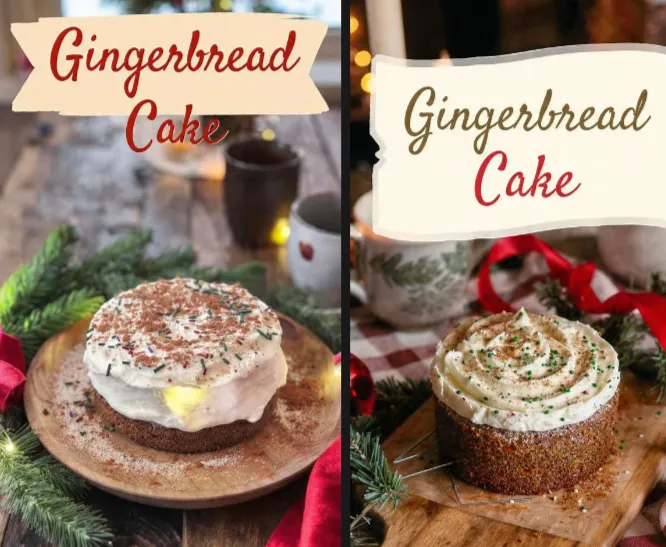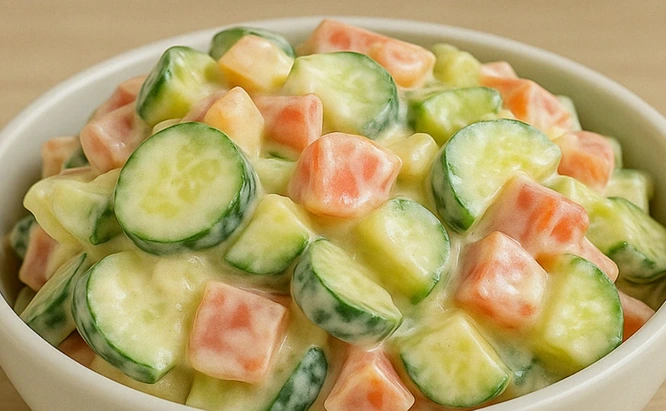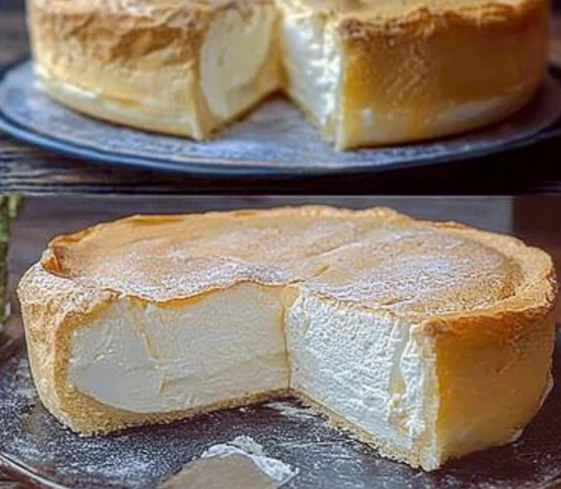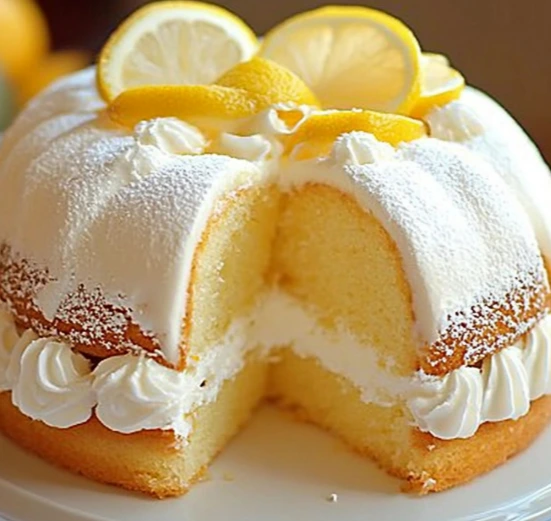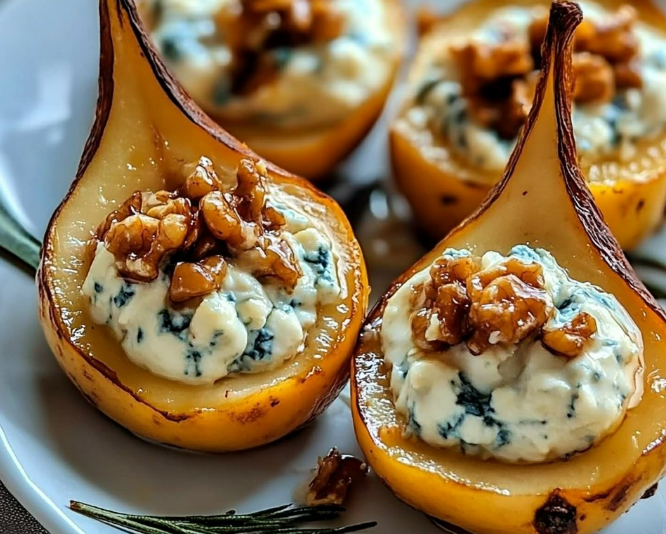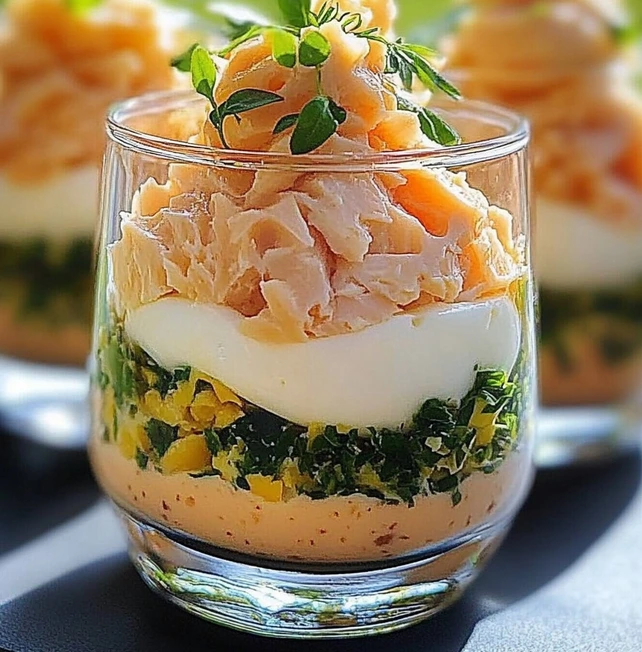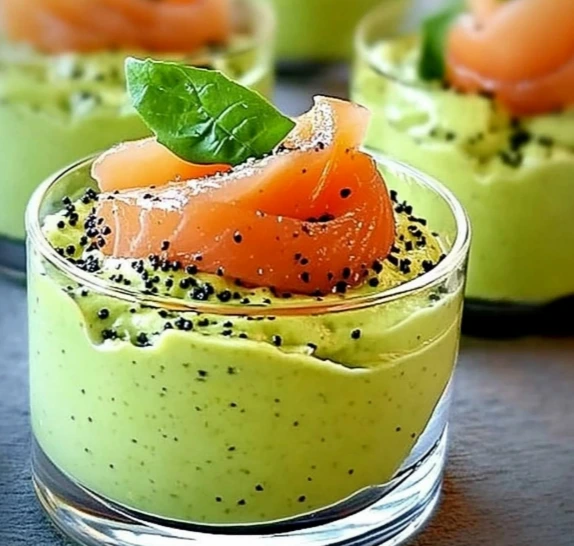Gingerbread Cake is the essence of holiday comfort — a moist, tender cake infused with the warm spices of ginger, cinnamon, and cloves, balanced by the deep sweetness of molasses. It’s a dessert that fills the kitchen with the nostalgic aroma of winter and brings a sense of warmth to every bite. Whether served plain, dusted with powdered sugar, or topped with cream cheese frosting, this cake is a timeless favorite for Christmas and cozy gatherings.
This recipe captures everything that makes gingerbread special — the perfect balance of spice, sweetness, and texture. It’s simple to make, yet rich in flavor, making it ideal for both festive celebrations and quiet evenings by the fire.
The Essence of Gingerbread Cake
The essence of gingerbread cake lies in its blend of spices and molasses. The ginger provides a gentle heat, the cinnamon adds warmth, and the cloves bring depth. The molasses ties everything together with its dark, caramel-like sweetness. The result is a cake that’s rich, aromatic, and deeply comforting.
It’s a dessert that embodies the spirit of the holidays — cozy, nostalgic, and full of flavor.
Why This Recipe Works
This recipe works because it balances moisture and spice. The combination of molasses, brown sugar, and buttermilk keeps the cake tender and flavorful, while the spices create a warm, inviting aroma. Baking at a moderate temperature ensures even cooking and a soft crumb. The result is a cake that’s moist, perfectly spiced, and irresistibly fragrant.
The simplicity of the ingredients and the reliability of the method make this recipe foolproof and delicious every time.
Ingredients and Their Roles
Flour: Provides structure and softness.
Molasses: Adds deep sweetness and moisture.
Brown sugar: Enhances flavor and tenderness.
Butter: Adds richness and a smooth texture.
Eggs: Bind the ingredients and add structure.
Buttermilk: Keeps the cake moist and adds tang.
Baking soda: Reacts with the acid in buttermilk for lift.
Spices: Ginger, cinnamon, and cloves create the signature flavor.
Salt: Balances sweetness and enhances flavor.
Step-by-Step Recipe
Ingredients
- 2½ cups all-purpose flour
- 1 teaspoon baking soda
- ½ teaspoon salt
- 2 teaspoons ground ginger
- 1½ teaspoons ground cinnamon
- ¼ teaspoon ground cloves
- ½ cup unsalted butter, softened
- ½ cup brown sugar
- 1 cup molasses
- 2 large eggs
- 1 cup buttermilk
- 1 teaspoon vanilla extract
Preparation
- Preheat the oven. Set the oven to 350°F (175°C). Grease and flour a 9×13-inch baking pan or line it with parchment paper.
- Mix dry ingredients. In a medium bowl, whisk together flour, baking soda, salt, ginger, cinnamon, and cloves.
- Cream butter and sugar. In a large bowl, beat the butter and brown sugar until light and fluffy. Add the molasses and mix until smooth.
- Add eggs and vanilla. Beat in the eggs one at a time, then add the vanilla extract.
- Combine wet and dry ingredients. Add the dry ingredients to the butter mixture in three additions, alternating with buttermilk. Mix gently until combined.
- Bake. Pour the batter into the prepared pan and smooth the top. Bake for 35–40 minutes, or until a toothpick inserted in the center comes out clean.
- Cool. Let the cake cool in the pan for 10 minutes, then transfer to a wire rack to cool completely.
- Serve. Dust with powdered sugar or top with cream cheese frosting.
Tips for Perfect Gingerbread Cake
- Use room-temperature ingredients for a smooth batter.
- Don’t overmix — it can make the cake dense.
- Use dark molasses for a richer flavor.
- Check for doneness early to avoid overbaking.
- Let the cake cool completely before frosting.
Variations and Flavor Combinations
1. Classic Gingerbread Cake
Traditional version with molasses and warm spices.
2. Lemon-Glazed Gingerbread Cake
Top with a simple lemon glaze for a bright contrast.
3. Cream Cheese Frosted Gingerbread Cake
Add tangy cream cheese frosting for richness.
4. Chocolate Gingerbread Cake
Add 2 tablespoons of cocoa powder for a chocolate twist.
5. Apple Gingerbread Cake
Fold in diced apples for extra moisture and sweetness.
6. Vegan Gingerbread Cake
Use plant-based milk and oil instead of butter and buttermilk.
Serving Suggestions
Gingerbread Cake pairs beautifully with:
- Whipped cream or vanilla ice cream.
- Hot coffee, tea, or mulled cider.
- Fresh berries or caramel sauce.
It’s perfect for:
- Christmas and holiday gatherings.
- Winter desserts.
- Afternoon tea or coffee breaks.
Make-Ahead and Storage
Make-ahead: Bake the cake one day in advance and store covered at room temperature.
Storage: Keep in an airtight container at room temperature for up to 3 days or refrigerate for up to 5 days.
Freezing: Freeze for up to 2 months. Thaw overnight before serving.
Reheating: Warm slices in the microwave for 10–15 seconds for a fresh-from-the-oven taste.
Nutritional Information (per serving)**
- Calories: 320 kcal
- Protein: 4 g
- Fat: 12 g
- Carbohydrates: 48 g
- Fiber: 1 g
The History of Gingerbread
Gingerbread has a long and storied history, dating back to medieval Europe. Originally made with breadcrumbs, honey, and spices, it evolved into the molasses-based cakes and cookies we know today. Ginger was prized for its warming properties and exotic flavor, making gingerbread a symbol of celebration and luxury. By the 18th century, gingerbread had become a holiday staple, especially in England and Germany, where it was shaped into houses and figures. The soft, spiced cake version became popular in America, where it remains a cherished winter dessert.
Texture and Flavor Profile
The perfect gingerbread cake is moist, tender, and full of flavor. The molasses gives it a deep, caramel-like sweetness, while the spices add warmth and complexity. The crumb is soft but substantial, making it satisfying without being heavy. Each bite delivers a balance of sweetness, spice, and richness that feels like a warm hug on a cold day.
Common Mistakes and How to Avoid Them
Dry cake: Don’t overbake; check for doneness early.
Bitter flavor: Use unsulfured molasses, not blackstrap.
Dense texture: Mix gently and don’t overwork the batter.
Flat flavor: Use fresh spices for the best aroma.
Sticky top: Let the cake cool completely before covering.
Chef’s Tips
- Add a tablespoon of grated fresh ginger for extra zing.
- Substitute part of the molasses with honey for a lighter flavor.
- Serve with lemon curd for a bright, tangy contrast.
- Sprinkle with powdered sugar just before serving for a festive look.
- Bake in a bundt pan for an elegant presentation.
Pairing Ideas
With Drinks:
- Hot chocolate or spiced chai for a cozy pairing.
- Mulled wine or brandy for a festive touch.
- Black tea or espresso for a balanced contrast.
With Other Dishes:
- Pair with roasted meats for a sweet-savory contrast.
- Serve alongside fruit compote or baked apples.
- Add to a dessert buffet with cookies and pies.
The Joy of Holiday Baking
Gingerbread Cake embodies the joy of holiday baking — the scent of spices filling the kitchen, the warmth of the oven, and the anticipation of sharing something homemade. It’s a dessert that brings people together, evoking memories of family gatherings and festive traditions.
It’s proof that the simplest ingredients can create the most comforting results.
The Science of Moist Gingerbread
The secret to a moist gingerbread cake lies in the chemistry of molasses and buttermilk. Molasses attracts and retains moisture, while buttermilk’s acidity tenderizes the gluten, creating a soft crumb. The baking soda reacts with the acid to give the cake lift, ensuring it’s light yet rich. The result is a perfectly balanced texture that stays moist for days.
Presentation and Finishing Touches
For an elegant presentation, dust the cooled cake with powdered sugar or drizzle with a simple glaze made from powdered sugar and milk. For a festive touch, top with sugared cranberries, candied ginger, or a dollop of whipped cream. Serve on a rustic wooden board or a holiday platter for a cozy, seasonal look.
Modern Variations
- Keto Version: Use almond flour and sugar substitutes.
- Gluten-Free Version: Use a gluten-free flour blend.
- Dairy-Free Version: Use almond milk and coconut oil.
- Low-Sugar Version: Use molasses sparingly and add stevia.
- Gourmet Version: Add orange zest and a drizzle of caramel sauce.
The Perfect Holiday Dessert
Gingerbread Cake is the perfect holiday dessert — warm, spiced, and full of character. It captures the essence of winter with its rich aroma and comforting flavor. Whether served at a festive dinner or enjoyed with a cup of tea by the fire, it’s a cake that brings joy and nostalgia to every bite.
The Cultural Influence of Gingerbread
Gingerbread has been a symbol of celebration across cultures for centuries. In Europe, it was shaped into ornate cookies and houses; in America, it became a soft, spiced cake. Its enduring popularity speaks to its universal appeal — a dessert that transcends time and geography, uniting people through shared flavors and traditions.
The Role of Spices and Molasses
The spices provide warmth and complexity, while the molasses adds depth and moisture. Together, they create the signature flavor that defines gingerbread — sweet, spicy, and perfectly balanced. The harmony of these ingredients is what makes the cake so comforting and memorable.
The Perfect Bite
The perfect bite of gingerbread cake is moist, tender, and warmly spiced. The molasses sweetness lingers, balanced by the gentle heat of ginger and the richness of butter. It’s a bite that feels like the holidays — cozy, nostalgic, and full of joy.
Conclusion
Gingerbread Cake is a celebration of flavor, tradition, and comfort. With its moist crumb, warm spices, and deep molasses flavor, it’s a dessert that brings the magic of the holidays to every table.
Easy to make yet rich in character, it’s perfect for Christmas, winter gatherings, or any time a little warmth is needed. This recipe proves that with simple ingredients and a touch of care, you can create a cake that’s both timeless and unforgettable — a true classic of holiday baking.

